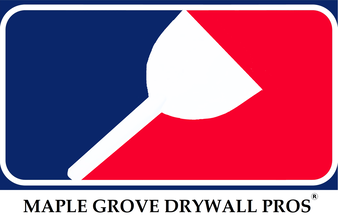Need Your Drywall Repair?
As drywall ages, it might deteriorate. In many cases, there can be issues with small sections of your drywall. However, in other cases, large portions of the drywall need replacement. Dents, patches, cracks, and water damage can affect the look of your drywall.
Electrical or plumbing holes might be necessary when there is work to be done on the home and building. Maple Grove Drywall Pros can patch these holes and carefully match the texture of the surrounding walls to make the holes disappear. We can mask off the region, sheetrock patches, or repairs and match the texture to make sure everything blends.
Basement Waterproofing Maple Grove
After water damage happens and the leak has been fixed, you will need to replace the drywall to make everything look back to normal. We can help replace bad drywall and get it looking new again. Or maybe there is a just a need for basement crack repair. Maple Grove Drywall Pros can do that too!.
Why does drywall crack?
There are several reasons why drywall may crack:
To repair a crack in drywall, you will need the following materials:
Electrical or plumbing holes might be necessary when there is work to be done on the home and building. Maple Grove Drywall Pros can patch these holes and carefully match the texture of the surrounding walls to make the holes disappear. We can mask off the region, sheetrock patches, or repairs and match the texture to make sure everything blends.
Basement Waterproofing Maple Grove
After water damage happens and the leak has been fixed, you will need to replace the drywall to make everything look back to normal. We can help replace bad drywall and get it looking new again. Or maybe there is a just a need for basement crack repair. Maple Grove Drywall Pros can do that too!.
Why does drywall crack?
There are several reasons why drywall may crack:
- Changes in temperature or humidity can cause drywall to expand or contract, leading to cracks.
- Drywall can also crack due to impact, such as when it is bumped or hit by furniture or other objects.
- Structural issues, such as foundation settling or framing problems, can cause drywall to crack.
- In some cases, drywall may crack due to the weight of heavy objects hung on the wall, such as large mirrors or heavy pictures.
- Poorly mixed or applied joint compound can also cause drywall to crack.
To repair a crack in drywall, you will need the following materials:
- Drywall tape
- Drywall joint compound
- A putty knife or trowel
- Sandpaper
- Primer and paint (optional)
- Clean the area around the crack and remove any loose debris or paint.
- Cut a piece of drywall tape that is slightly longer than the crack.
- Apply a thin layer of joint compound to the area around the crack, using the putty knife or trowel.
- Place the drywall tape over the crack, smoothing it down with the putty knife or trowel.
- Allow the joint compound to dry completely according to the manufacturer's instructions. This can take several hours or up to a day, depending on the type of compound you are using.
- Once the joint compound is dry, sand the area smooth with sandpaper.
- If desired, prime and paint the repaired area to match the surrounding wall.
763-347-2456
(Click To Call For Mobile)


